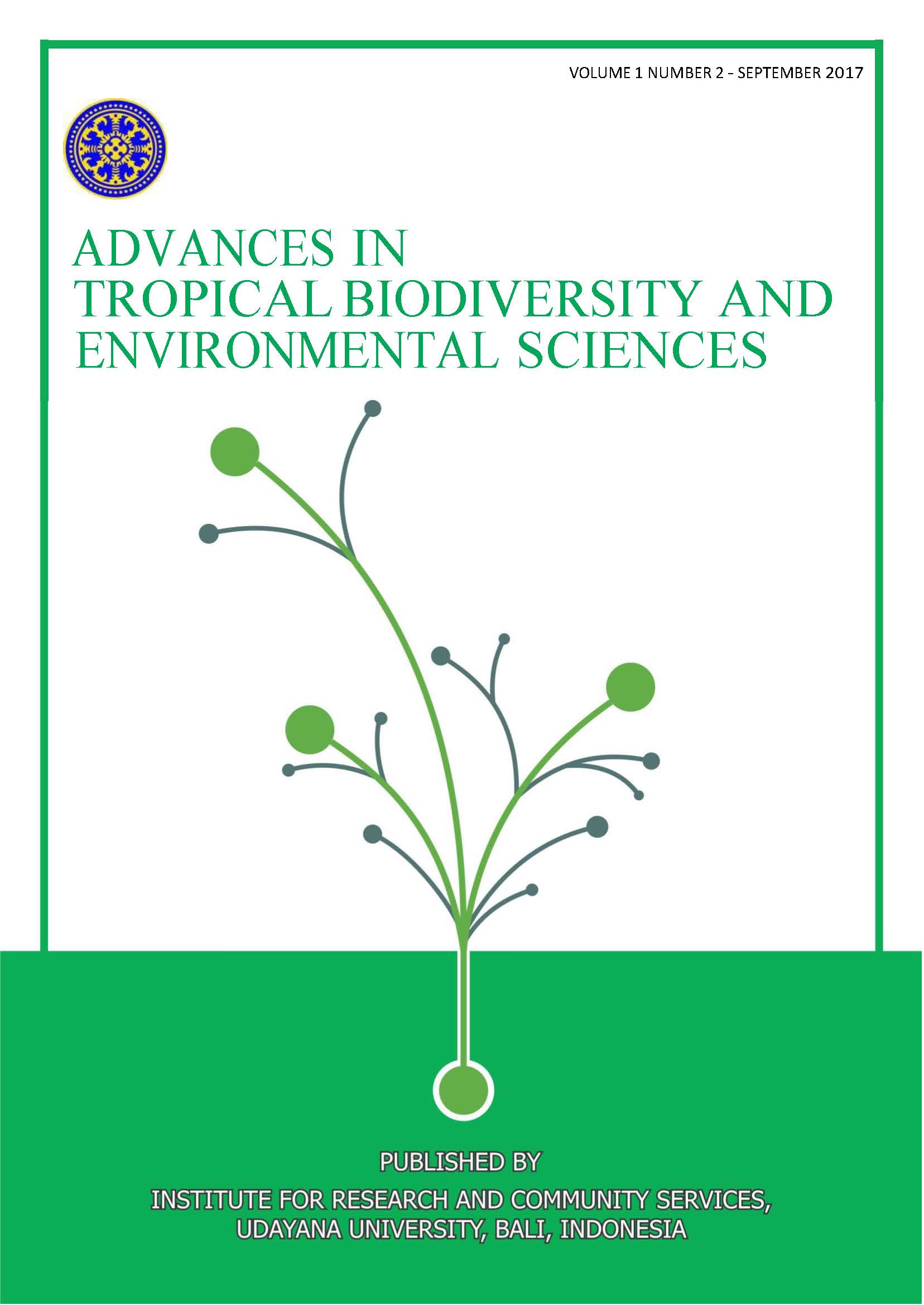Variation of Entrances, Food Storage and Brood Cells of Trigona laeviceps Bees from Various Habitat
Abstract
Trigona is a stingless bee that protects itself by swarming and biting. The bee products that are widely used in addition to honey are propolis, wax and the royal jelly. Trigona bee is one of potentially honey producer that has not been widely known. One species of trigona bee found in Bali is the Trigona laeviceps. They are nested in the crevices of rocks or in the tree trunk. This research aims to determine variations of entrance shapes, food storage, and brood cells of T. laeviceps from different altitudes. Colonies were observed in the Laboratory of Animal Taxonomy, Biology Department, Faculty of Mathematics and Basic Sciences, Udayana University, and nest entrance was analyzed in the Analytic Laboratory, Udayana University. Colonies were collected from bamboo nest in a tubular form and wooden nest from wooden boxes. Nest entrance is either flat or protruded out of the nest in an oval shape. The form of the entrance is not affected by the altitude. The nest entrance contained around 0,05 % flavonoids. The size and shape of pollen and honey pots volume was lightly lager in colonies collected from altitudes more than 400m above sea level (0.058 ± 0.04 mm³) than colonies collected from altitudes less than 400 m above sea level (0.035 ± 0.03 mm³). Royal jelly pots and brood cells have also similar shapes, but the volume is larger in colonies collected from altitudes less than 400 m above sea level (0.015 ± 0.07mm³) compared to altitude of more than 400 m above sea level (0.011 ± 0.02 mm³ )













